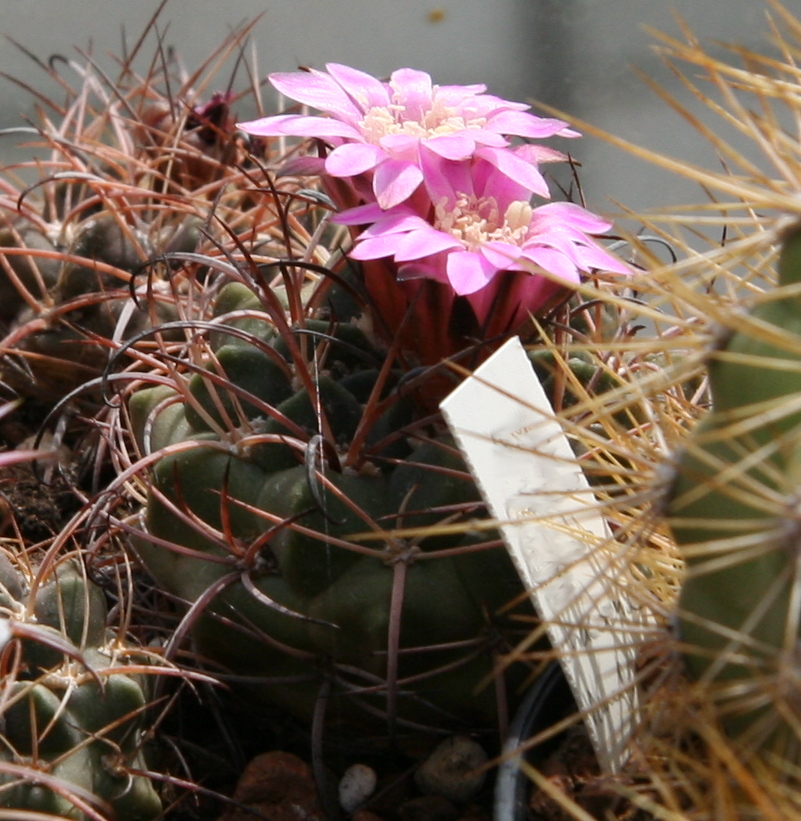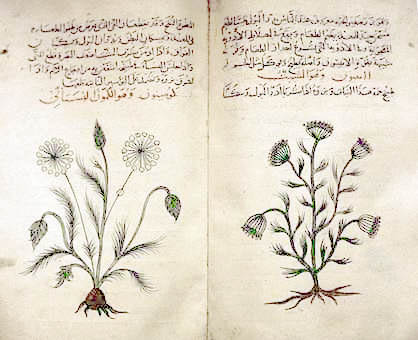|
Erich Werdermann
Erich Werdermann (2 March 1892 – 20 April 1959) was a German botanist. Born in Berlin, Erich Werdermann was the son of the landowner Carl Werdermann. He first studied in Jena, but then switched to Friedrich Wilhelm University (now called Humboldt University of Berlin) in Berlin. In 1914 shortly before his graduation, Werdermann was enlisted in the army and in 1915 promoted to the rank of officer. After recovering from serious wounds suffered in 1918, he was able to continue his studies. The following year Werdermann graduated as a plant physiologist at Gottlieb Haberlandt. From 1919 to 1920 he worked at the Imperial Biological Institute in Berlin, where Peter Claussen (1877–1959) sparked his interest in fungi. From 1920 to 1921, Mann was a research assistant at the Imperial Health Office with Ernst Friedrich Gilg, who introduced him to the Botanical Museum Berlin-Dahlem. In 1921, he succeeded Rudolf Schlechter as the curator of mushrooms in the herbarium of the museum. ... [...More Info...] [...Related Items...] OR: [Wikipedia] [Google] [Baidu] |
Berlin
Berlin is Capital of Germany, the capital and largest city of Germany, both by area and List of cities in Germany by population, by population. Its more than 3.85 million inhabitants make it the European Union's List of cities in the European Union by population within city limits, most populous city, as measured by population within city limits having gained this status after the United Kingdom's, and thus London's, Brexit, departure from the European Union. Simultaneously, the city is one of the states of Germany, and is the List of German states by area, third smallest state in the country in terms of area. Berlin is surrounded by the state of Brandenburg, and Brandenburg's capital Potsdam is nearby. The urban area of Berlin has a population of over 4.5 million and is therefore the most populous urban area in Germany. The Berlin/Brandenburg Metropolitan Region, Berlin-Brandenburg capital region has around 6.2 million inhabitants and is Germany's second-largest metropolitan reg ... [...More Info...] [...Related Items...] OR: [Wikipedia] [Google] [Baidu] |
German Cactus Society
German(s) may refer to: * Germany (of or related to) **Germania (historical use) * Germans, citizens of Germany, people of German ancestry, or native speakers of the German language ** For citizens of Germany, see also German nationality law **Germanic peoples (Roman times) * German language **any of the Germanic languages * German cuisine, traditional foods of Germany People * German (given name) * German (surname) * Germán, a Spanish name Places * German (parish), Isle of Man * German, Albania, or Gërmej * German, Bulgaria * German, Iran * German, North Macedonia * German, New York, U.S. * Agios Germanos, Greece Other uses * German (mythology), a South Slavic mythological being * Germans (band), a Canadian rock band * "German" (song), a 2019 song by No Money Enterprise * ''The German'', a 2008 short film * "The Germans", an episode of ''Fawlty Towers'' * ''The German'', a nickname for Congolese rebel André Kisase Ngandu See also * Germanic (other) * Ge ... [...More Info...] [...Related Items...] OR: [Wikipedia] [Google] [Baidu] |
Cacti
A cactus (, or less commonly, cactus) is a member of the plant family Cactaceae, a family comprising about 127 genera with some 1750 known species of the order Caryophyllales. The word ''cactus'' derives, through Latin, from the Ancient Greek word (''káktos''), a name originally used by Theophrastus for a spiny plant whose identity is now not certain. Cacti occur in a wide range of shapes and sizes. Although some species live in quite humid environments, most cacti live in habitats subject to at least some drought. Many live in extremely dry environments, even being found in the Atacama Desert, one of the driest places on Earth. Because of this, cacti show many adaptations to conserve water. For example, almost all cacti are succulents, meaning they have thickened, fleshy parts adapted to store water. Unlike many other succulents, the stem is the only part of most cacti where this vital process takes place. Most species of cacti have lost true leaves, retaining only spines ... [...More Info...] [...Related Items...] OR: [Wikipedia] [Google] [Baidu] |
Neowerdermannia
''Neowerdermannia'' is a genus of South American cacti A cactus (, or less commonly, cactus) is a member of the plant family Cactaceae, a family comprising about 127 genera with some 1750 known species of the order Caryophyllales. The word ''cactus'' derives, through Latin, from the Ancient Greek .... Species The genus comprises only two species:, pp. 482–483 References Cactoideae genera Notocacteae {{cactus-stub ... [...More Info...] [...Related Items...] OR: [Wikipedia] [Google] [Baidu] |
Alberto Vojtech Fric
Alberto is the Romance version of the Latinized form (''Albertus'') of Germanic ''Albert''. It is used in Italian, Portuguese and Spanish. The diminutive forms are ''Albertito'' in Spain or ''Albertico'' in some parts of Latin America, Albertino in Italian as well as ''Tuco'' as a hypocorism. It derives from the name Adalberto which in turn derives from '' Athala'' (meaning noble) and ''Berth'' (meaning bright). People * Alberto Aguilar Leiva (born 1984), Spanish footballer * Alberto Airola (born 1970), Italian politician * Alberto Ascari (1918–1955), Italian racing driver * Alberto Baldonado (born 1993), Panamanian baseball player * Alberto Bello (1897–1963), Argentine actor * Alberto Beneduce (1877–1944), Italian scientist and economist * Alberto Bustani Adem (born 1954), Mexican engineer * Alberto Callaspo (born 1983,) baseball player * Alberto Campbell-Staines (born 1993), Australian athlete with an intellectual disability * Alberto Cavalcanti (1897–1982), Br ... [...More Info...] [...Related Items...] OR: [Wikipedia] [Google] [Baidu] |
Otto Eugen Schulz
Otto Eugen Schulz (31 October 1874 – 17 February 1936) was a German botanist, born in Berlin. He was the brother of botanist Roman Schulz (1873–1926). He published important systematic treatments of the families Brassicaceae (then known as Cruciferae) and Erythroxylaceae, and he is the authority for numerous species within these families. He was the author of a 1903 treatise on the genus ''Cardamine'' (family Brassicaceae), titled "Monographie der Gattung Cardamine'". The genus ''Ottoschulzia'' (family Metteniusaceae) was named in his honor by Ignatz Urban Ignatz Urban (7 January 1848 – 7 January 1931) was a German botany, botanist. He is known for his contributions to the flora of the Caribbean and Brazil, and for his work as curator of the Botanical Garden in Berlin, Berlin Botanical Garden. ... (1848–1931) in 1912. [...More Info...] [...Related Items...] OR: [Wikipedia] [Google] [Baidu] |
Ludwig Diels
Dr. Friedrich Ludwig Emil Diels (24 September 1874 – 30 November 1945) was a German botanist. Diels was born in Hamburg, the son of the classical scholar Hermann Alexander Diels. From 1900 to 1902 he traveled together with Ernst Georg Pritzel through South Africa, Java, Australia and New Zealand. Shortly before the First World War he travelled New Guinea and in the 1930s in Ecuador. Especially his collections of plants from Australia and Ecuador, which contained numerous holotypes, enriched the knowledge of the concerning floras. His monography on the Droseraceae from 1906 is still a standard. The majority of his collections were stored at the botanical garden in Berlin-Dahlem, whose vicedirector he had been since 1913, becoming its director in 1921 until 1945. His collections were destroyed there during an air raid in 1943. He died in Berlin on 30 November 1945. Honours Several genus of plants have been named after him including; ''Dielsantha'' (from ''Campanulace ... [...More Info...] [...Related Items...] OR: [Wikipedia] [Google] [Baidu] |
Adolf Engler
Heinrich Gustav Adolf Engler (25 March 1844 – 10 October 1930) was a German botanist. He is notable for his work on plant taxonomy and phytogeography, such as ''Die natürlichen Pflanzenfamilien'' (''The Natural Plant Families''), edited with Karl A. E. von Prantl. Even now, his system of plant classification, the Engler system, is still used by many herbaria and is followed by writers of many manuals and floras. It is still the only system that treats all 'plants' (in the wider sense, algae to flowering plants) in such depth. Engler published a prodigious number of taxonomic works. He used various artists to illustrate his books, notably Joseph Pohl (1864–1939), an illustrator who had served an apprenticeship as a wood-engraver. Pohl's skill drew Engler's attention, starting a collaboration of some 40 years. Pohl produced more than 33 000 drawings in 6 000 plates for ''Die naturlichen Pflanzenfamilien''. He also illustrated ''Das Pflanzenreich'' (1900–1953), ''Die Pfl ... [...More Info...] [...Related Items...] OR: [Wikipedia] [Google] [Baidu] |
International Botanical Congress
International Botanical Congress (IBC) is an international meeting of botanists in all scientific fields, authorized by the International Association of Botanical and Mycological Societies (IABMS) and held every six years, with the location rotating between different continents. The current numbering system for the congresses starts from the year 1900; the XVIII IBC was held in Melbourne, Australia, 24–30 July 2011, and the XIX IBC was held in Shenzhen, China, 23–29 July 2017. The IBC has the power to alter the ICN (International Code of Nomenclature for algae, fungi, and plants The ''International Code of Nomenclature for algae, fungi, and plants'' (ICN) is the set of rules and recommendations dealing with the formal botanical names that are given to plants, fungi and a few other groups of organisms, all those "trad ...), which was renamed from the International Code of Botanical Nomenclature (ICBN) at the XVIII IBC. Formally the power resides with the Plenary Session ... [...More Info...] [...Related Items...] OR: [Wikipedia] [Google] [Baidu] |
Free University Of Berlin
The Free University of Berlin (, often abbreviated as FU Berlin or simply FU) is a public university, public research university in Berlin, Germany. It is consistently ranked among Germany's best universities, with particular strengths in political science and the humanities. It is recognised as a leading university in international university rankings. The Free University of Berlin was founded in West Berlin in 1948 with United States, American support during the early Cold War period as a West Berlin, Western continuation of the Humboldt University of Berlin, Friedrich Wilhelm University, or the University of Berlin, whose traditions and faculty members it retained. The Friedrich Wilhelm University (which was renamed the Humboldt University of Berlin, Humboldt University), being in East Berlin, faced strong communist repression; the Free University's name referred to West Berlin's status as part of the Western Free World, in contrast to communist-controlled East Berlin. In 2 ... [...More Info...] [...Related Items...] OR: [Wikipedia] [Google] [Baidu] |
Pharmacognosy
Pharmacognosy is the study of medicinal plants and other natural substances as sources of drugs. The American Society of Pharmacognosy defines pharmacognosy as "the study of the physical, chemical, biochemical, and biological properties of drugs, drug substances, or potential drugs or drug substances of natural origin as well as the search for new drugs from natural sources". Description The word "pharmacognosy" is derived from two Greek words: ', (drug), and ''gnosis'' (knowledge) or the Latin verb '' cognosco'' (', 'with', and , 'know'; itself a cognate of the Greek verb , , meaning 'I know, perceive'), meaning 'to conceptualize' or 'to recognize'. The term "pharmacognosy" was used for the first time by the Austrian physician Schmidt in 1811 and by Anotheus Seydler in 1815 in a work titled ''Analecta Pharmacognostica''. Originally—during the 19th century and the beginning of the 20th century—"pharmacognosy" was used to define the branch of medicine or commodity scie ... [...More Info...] [...Related Items...] OR: [Wikipedia] [Google] [Baidu] |





